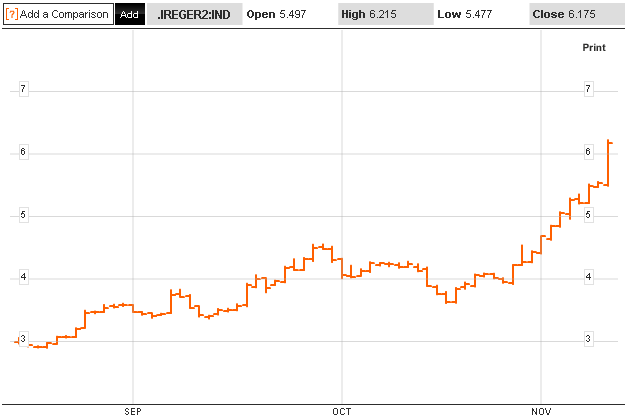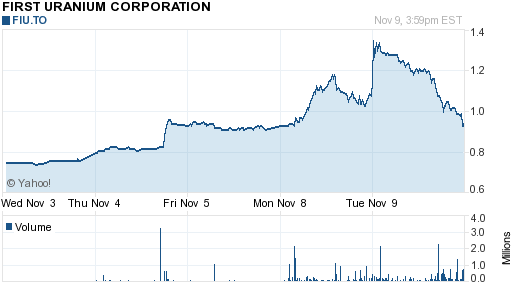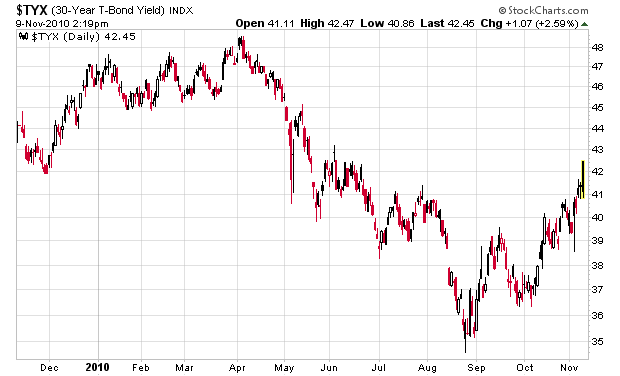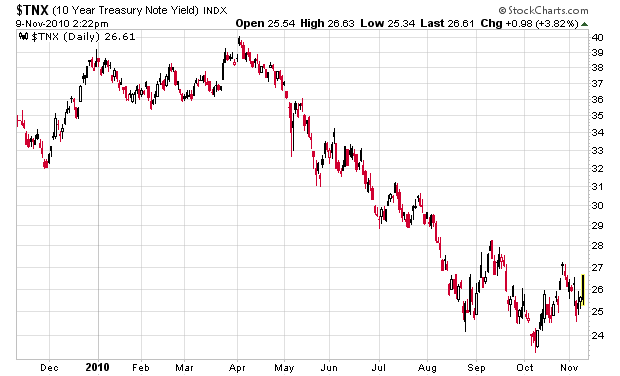BAX futures suggest that the overnight target rate will be held at 1% for the December 7, 2010 Bank of Canada meeting:
| Month / Strike | Bid Price | Ask Price | Settl. Price | Net Change | Vol. |
| + 10 NO | 0.000 | 0.000 | 98.690 | 0.000 | 0 |
| + 10 DE | 98.710 | 98.715 | 98.710 | 0.000 | 4741 |
| + 11 JA | 0.000 | 0.000 | 98.675 | 0.000 | 0 |
| + 11 MR | 98.600 | 98.610 | 98.600 | 0.000 | 12558 |
| + 11 JN | 98.460 | 98.470 | 98.460 | 0.000 | 15591 |
| + 11 SE | 98.280 | 98.300 | 98.290 | 0.000 | 13157 |
| + 11 DE | 98.140 | 98.150 | 98.140 | 0.010 | 7394 |
| + 12 MR | 98.020 | 98.040 | 98.030 | 0.000 | 3483 |
| + 12 JN | 97.930 | 97.970 | 97.950 | 0.010 | 274 |
| + 12 SE | 97.850 | 97.930 | 97.910 | 0.010 | 108 |
| + 12 DE | 97.780 | 97.830 | 97.830 | 0.010 | 7 |
The rates do suggest that by mid-year we might see another 0.5% increase in rates throughout 2011, but this is financially speculative noise peeking through the woodwork. 3-month corporate paper is yielding 1.17% at present, so there is not much of a divergence between existing rates and implied December 2010 rates.
In terms of long-term rates, Canadian 10-year bonds have crept up to 2.98% at the end of November 10th trading. While this is not anything significant in terms of the range over the past 12 months, it is up about a quarter point over the past month. The big scare for real estate gurus out there was likely in the early second quarter (April) when 10-year bond rates went to 3.7%. Still, this is nothing close to the past decade’s average of 4.3%, and the peak rate of roughly 5.96% back in the year 2001.
I am struggling to make what is a rather boring interest rate post interesting, so I will leave it here.




